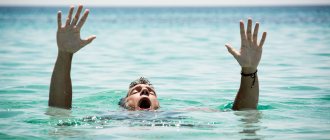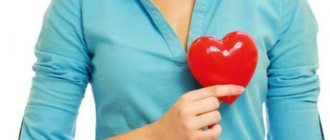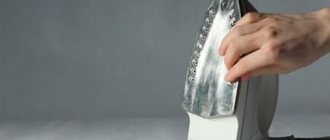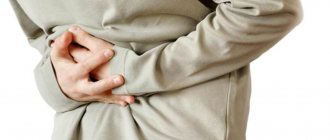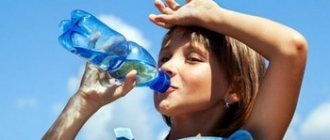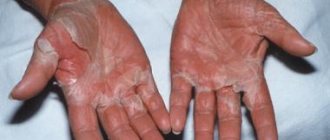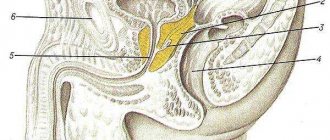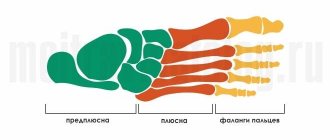First aid for heatstroke should be provided immediately after warning symptoms are detected. Otherwise, the victim's condition will quickly deteriorate.
In medical terminology, heatstroke is a painful condition caused by impaired brain function. The reasons for this phenomenon are always the same: too long a thermal effect on the patient’s body. Moreover, we are not always talking about classic sunstroke, which is characterized by a direct impact on the uncovered surface of the head.
Often, traditional heatstroke occurs due to general overheating of the entire body, which is caused by particularly hot environmental conditions and inappropriate clothing for the circumstances.
Even training in the gym in an insulated tracksuit can lead to a similar outcome.
What is sunstroke and why does it occur?
Sunstroke is a painful phenomenon that is characterized by a disorder of the brain. The cause of this condition is intense or prolonged exposure to sunlight on the surface of the head.
Sunstroke is considered a special type of heatstroke, but unlike it, it involves overheating only the head. Because of this, a person’s sweating and blood circulation, as well as the activity of various organs and systems, are disrupted.
The occurrence of sunstroke is explained by the heating of the head by direct sunlight, against the background of which all parts of the brain overheat. This phenomenon is called hyperthermia. Due to overheating, swelling of the membranes of the brain develops, and its ventricles overflow with cerebrospinal fluid.
Hyperthermia also provokes dilation of the arteries in the brain, which increases blood pressure and small vessels can be damaged. All these pathological changes form a clinical picture characteristic of sunstroke and cause unpleasant consequences.
The risk of sunstroke increases in conditions of high air temperature, high humidity, low wind speed, excess body weight, and nervous tension. People suffering from certain diseases (hypertension, heart disease, vegetative-vascular dystonia, pathologies of the endocrine system) are more susceptible to heliosis. Risk factors for sunstroke also include smoking, drinking alcohol, not drinking enough fluids, and high physical activity.
Aggravating factors
Children suffer the worst from classic heatstroke, since their bodies are less adapted to fight for timely cooling of the body in extreme conditions.
At the same time, the conditions conducive to the onset of a critical situation remain the same for children and adults. Most often this is:
- direct exposure to solar ultraviolet radiation on the uncovered surface of the head;
- increased humidity in the environment;
- a number of concomitant chronic diseases.
In the latter case, we are talking mostly about diseases associated with destabilization of cardiovascular activity. The list is headed by coronary heart disease, heart defects, and chronically high blood pressure.
Various endocrine disorders and obesity of any degree also become aggravating factors.
Doctors emphasize that the most important thing is to prevent possible lesions among infants who are not even one year old. These babies are the first to be exposed to excessive amounts of heat.
Elderly people are also at risk. They, like newborns, have unstable natural thermoregulation. If in the former it is simply not yet properly established, then among older people its natural degradation is often common.
Among the indirect catalysts for deterioration are:
- smoking;
- alcohol abuse;
- nervous overstrain.
To protect against the negative effects of excessive sun exposure, experts recommend avoiding these conditions. Only such vigilance will prevent the development of sad side effects, including even fever.
Signs of sunstroke in adults and children
The severity of the symptoms of this phenomenon varies from person to person. Young children (especially up to one year old) and the elderly are most susceptible to it and tolerate it worse. The duration of exposure to direct sunlight, the intensity of radiation and overall health are also important.
Common symptoms of sunstroke are as follows:
- lethargy, drowsiness;
- weakness;
- thirst, dry mouth;
- dizziness;
- increasing headache;
- hyperemia of the face, skin;
- tachycardia;
- body temperature rises;
- from the organs of vision - the eyes become dark, objects double, spots appear before the eyes, the gaze is poorly concentrated;
- Blood pressure indicators can change in any direction, its increase causes nausea and vomiting.
Features of the clinical picture of sunstroke depend on its degree - mild, moderate or severe. Mild degree is characterized by the following symptoms:
- weakness;
- nausea;
- headache;
- pupils dilated;
- pulse and breathing are increased.
With moderate sunstroke , a person is stunned, his movements are uncertain, his gait is unsteady, his pulse and breathing are rapid. The victim has a severe headache, nausea or vomiting, and the temperature rises to 38-40 degrees.
of severe sunstroke :
- consciousness changes - up to coma;
- rave;
- hallucinations;
- convulsions – clonic, tonic;
- involuntary urination and defecation;
- increase in body temperature to 41-42 degrees.
Young children with sunstroke may become lethargic and drowsy or irritable. The following phenomena are also characteristic:
- perspiration on the face;
- increased body temperature;
- nausea, vomiting;
- in case of serious damage - loss of consciousness, breathing may stop, cardiac activity may be impaired.
In young children, the body's thermoregulation is still imperfect, its protective properties are insufficient, and the scalp is especially sensitive to thermal effects. Against the background of such features, the signs of sunstroke in children are more pronounced and develop faster.
First aid and further measures
The manifestations of sunstroke are quite vivid; this phenomenon can lead to a number of unpleasant consequences. At the first sign of it, the affected person needs first aid. It consists of the following activities:
- exclude further exposure to sunlight - the victim should be placed in a shaded and cool place;
- ensure a supine position, with the head turned to the side, otherwise there is a risk of choking on vomit;
- remove clothes that are restricting the victim, ensure air flow to the body;
- raise your legs - place a cushion under them (can be made from a rolled up towel or clothes);
- There should be moist, cool compresses on the forehead, back of the head and neck;
- while maintaining consciousness, ensure that you drink plenty of fluids - the water should be salted, since the water-salt balance is disturbed during sunstroke;
- in the absence of consciousness, resort to ammonia;
- call an ambulance - this measure is mandatory in any case, especially for the elderly and young children, since even if the condition returns to normal, there is a risk of certain negative consequences.
To help a person who has suffered a sunstroke, do not use ice or too cold water. After overheating, this will create a temperature contrast, which will become additional stress for the body and is fraught with the risk of reflex vascular spasm, against the background of which the victim’s condition will only worsen.
How to recognize sunstroke and provide first aid to a person affected by it is described in this video:
The need for further measures is determined by ambulance workers and a doctor. Depending on the condition of the victim, the following measures may be required:
- artificial respiration;
- intravenous administration of sodium chloride solution (restoration of water-salt balance);
- subcutaneous administration of niketamide, caffeine (if heart failure, asphyxia has developed);
- taking diuretics, hypotonic drugs (for high blood pressure).
When a person gets severe sunstroke, he is hospitalized. In a hospital setting, they resort to resuscitation measures - intravenous infusions, cardiac stimulation, stimulation of diuresis, intubation, oxygen therapy and other necessary measures.
Even with rapid normalization of the condition, it is not recommended to allow the victim to get up immediately. You need to remain in a lying position for some time. The consequences may take several hours or even days to appear.
After getting sunstroke, you need to monitor your condition for a few more days with special attention. The victim must adhere to the following rules:
- limitation of physical activity and stress;
- avoiding exposure to heat and sun;
- increased drinking regime;
- if possible, adherence to bed rest;
- avoiding overeating, you need to eat only light foods, portions should be small.
Often people who have suffered sunstroke once are more susceptible to it in the future. They should pay increased attention to the prevention of this phenomenon.
How to help your child
Self-medication in the case of children is unacceptable, but until the doctors arrive, or everything happens outside the city, you must be able to provide first aid. What to do first:
- hide the child in the shade, provide air flow, but without fanaticism, no air conditioning; sudden temperature changes are inappropriate;
- put the child on his side so that he does not choke while vomiting;
- If possible, remove all clothing;
- be sure to give something to drink, it should be cool water (not cold), no sweet drinks;
- If you lose consciousness, cover your head with a towel or cloth soaked in lukewarm water. Applying ice to the head is contraindicated. Strong temperature changes can cause blood vessels to contract, and this will only worsen the situation.
Possible consequences
This phenomenon is fraught with many troubles. In most cases, all its consequences appear on the first day. In addition to the main signs of sunstroke, there is a risk of cardiac and respiratory arrest and coma.
Severe sunstroke and untimely medical care carry a risk of death.
When sunstroke occurs, the central nervous system is affected. Hyperthermia can lead to heart attack and stroke. There is a risk of exacerbation of chronic diseases, as well as the development of pathologies for which there were previously prerequisites. The risk of damage to the central nervous system and endocrine system is especially high.
Sunstroke can also trigger acute kidney or heart failure, especially if it occurs during physical activity.
Prevention
To reduce the likelihood of getting sunstroke, you must adhere to the following preventive measures:
- protect your head from overheating - use a cap, scarf, hat, Panama hat; the material of the headdress should be light and lightweight;
- when exposed to the sun for a long time, take breaks more often, going into the shade;
- increase your time in the sun gradually, especially when visiting unusually hot countries;
- exclude exposure to the sun during the most active hours - from 11:00-12:00 to 16:00 (depending on geographical location);
- when in the sun, it is better not to lie down, but to be in motion;
- do not overeat;
- observe the drinking regime - in the hot season it should be intensified, you should drink at least 0.1 liter of liquid every hour;
- exclude carbonated drinks, alcohol, strong tea, coffee;
- for drinking it is better to use plain or mineral (still) water;
- Take a cool shower during the day – it is not necessary to use soap every time;
- wipe your face, neck, and limbs with cool water.
The risk of sunstroke is quite high, especially for certain categories of the population. This phenomenon can cause unpleasant and even dangerous consequences, so it is necessary to follow preventive measures. If a person receives sunstroke, he should immediately provide first aid and call an ambulance.
Causes
Sunstroke develops under the influence of the sun at its zenith - at this time, the sun's rays at a minimum angle affect the maximum possible area. The immediate cause of the occurrence may be work, outdoor recreation, walking or being on the beach from 10-11 to 15-16 hours of the day. Provoking factors include windless, stuffy weather, lack of headwear, overeating, improper drinking regimen, drinking alcoholic beverages and taking medications that reduce the body's ability to thermoregulate (for example, antidepressants). The likelihood of developing this pathology increases with hypertension, vegetative-vascular dystonia, heart disease and obesity.

